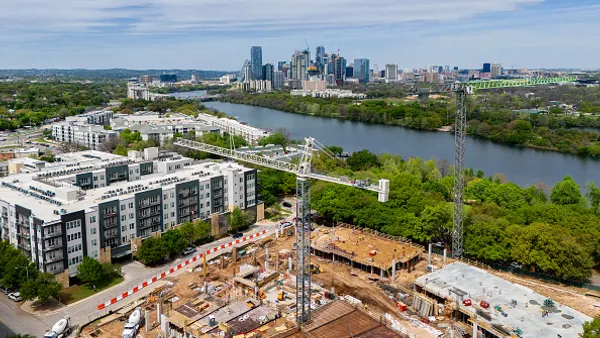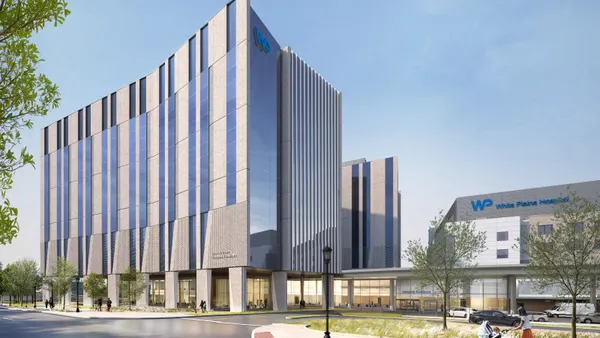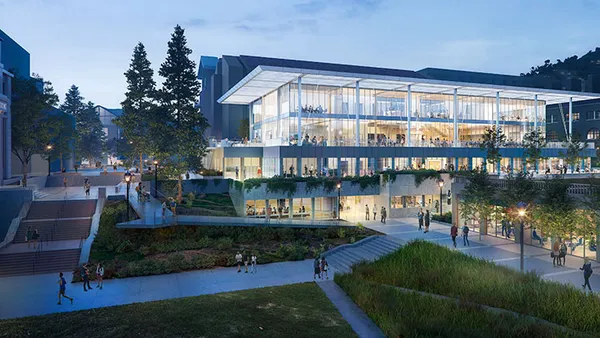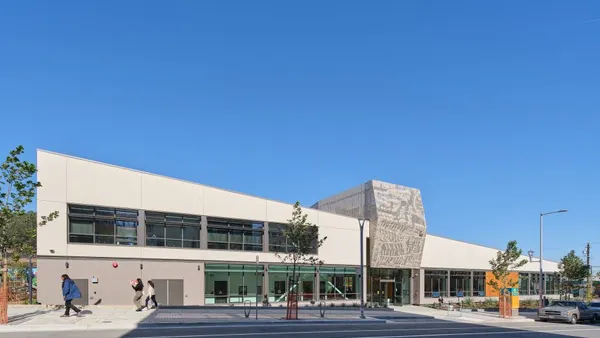NOTE: This article is Part 2 of 2. See Part 1 with Dodge's predictions for institutional, manufacturing and public works construction here.
Dodge Data & Analytics released its much-anticipated 2017 Dodge Construction Outlook Thursday during the firm's Outlook 2017 Executive Conference, held at Maryland's National Harbor. While nearly all sectors are expected to grow or remain unchanged next year, the volatile electric power/gas plant segment will likely drag down total starts figures for the industry in 2017, according to Dodge Data & Analytics Chief Economist Robert Murray.
In its 2017 Outlook report, Dodge said it expects institutional construction activity to rise 10%, manufacturing to grow 6%, public works to increase 6% and electric utilities/gas plants to plunge 29%. While Dodge doesn't expect a major spike in overall spending this year — due largely to the significant decline in the power sector — its Outlook report offers a positive forecast of a 5% gain in construction starts in 2017.
Institutional buildings
Educational building predictions
2016: +3% starts; 127 million square feet
2017: +9% starts; 138 million square feet
Murray said the main driver of growth in the educational sector has been K-12 schools, rather than higher education institutions. Endowments to colleges and universities have leveled off, enrollment numbers have been disappointing and schools have struggled to fund necessary projects. However, Dodge expects growth to continue in the sector due largely to several school construction bond measures as well as an influx of students.
Healthcare facility predictions
2016: -4% starts; 66 million square feet
2017: +5 starts; 69 million square feet
Healthcare construction "just seems to be stalled in this range," Murray said. The stagnant nature of the market has resulted from debate over the Affordable Care Act and questions over whether the next president will keep it in place. In addition to uncertainty regarding the healthcare system, the trend of megamergers in the healthcare industry has also dampened new construction activity, according to Murray. Once the election is over and the fate of the ACA is determined, Dodge expects healthcare construction to pick up. The rise of offsite health clinics and the growing need to serve an aging population will also contribute to growth in the sector.
Public building predictions
2016: -8% starts; 12.7 million square feet
2017: +6% starts; 13.5 million square feet
Public building construction — which includes detention facilities, courthouses, police and fire stations, post offices and armories — has lingered on "somewhat of a downward track," Murray said. Due to tight economic conditions, the public building construction sector has fallen in seven of the last eight years. However, as local governments are starting to boost their spending budgets, the public building market is expected to grow in 2017.
Religious buildings predictions
2016: -27% starts; 7.3 million square feet
2017: +3% starts; 7.5 million square feet
The religious buildings sector has veered from the traditional path of the construction cycle and has seen construction activity fall for the past 13 years. Low religious institution membership and attendance, as well as declining contributions, have contributed to the downward trend. Although Dodge anticipates that 2017 will see a slight rise in starts, activity in the sector will likely remain low going forward.
Amusement and recreational buildings predictions
2016: +3% starts; 41 million square feet
2017: +13% starts; 46.9 million square feet
Activity in the amusement and recreational buildings sector — which includes sports stadiums, convention centers, casinos and other amusement facilities — is largely spurred by the construction of major sports venues. This sector is unique in that it often includes a mix of public and private funding. This year and next year will see large projects such as the Los Angeles Rams stadium and the possible Texas Rangers stadium, in Arlington, TX, contribute to a bump in starts.
Manufacturing
Manufacturing building predictions
2016: -10% starts; 58 million square feet
2017: +7% starts; 62 million square feet
The manufacturing sector is often volatile, as it is impacted by the petrochemical industry. However, as the global economy strengthens and demand for U.S. exports picks up, Dodge expects manufacturing construction to also improve next year. The transportation sector in particular could spur growth in manufacturing building, according to Murray.
Public works, electric and gas
Highway and bridge construction predictions
2016: -10%; $58.8 billion
2017: +5%; $62.0 billion
Several factors are likely to contribute to a surge in highway and bridge construction next year, according to Murray. First, Congress' passage of the five-year, $305 billion Fixing America’s Surface Transportation Act in December will likely materialize on the job site next year. In addition, bipartisan support for increased infrastructure spending on the national and local levels bodes well for future funding infusions. The growing popularity of public-private partnerships could also spur a rise in highway and bridge construction.
Environmental public works predictions
2016: -4%; $31.6 billion
2017: +8%; $34.2 billion
This sector is largely driven by the Environmental Protection Agency. Murray said the Water Resources Development Act, which he expects will pass this year, could lead to a significant boom for the sector. He said the need for environmental public works has become a national priority, as recent flooding in the Southeastern U.S. and Texas demonstrates that "the need is there."
Electric power and gas plant predictions
2016: -26%; $42.0 billion
2017: -29%; $30.0 billion
The electric utilities and gas plant sector is the biggest drag on overall construction numbers, according to Murray. A steep drop in liquefied natural gas (LNG) plant construction this year contributed to the 26% decline in 2016 starts, as natural gas price levels continue to stay low. On a positive note for the segment, solar and wind power construction surged last year and is expected to remain strong in 2017. The extension of tax credits for these types of projects helped boost solar and wind power construction. However, despite those gains, the plunge in gas plant construction will result in a 29% drop in starts next year.













